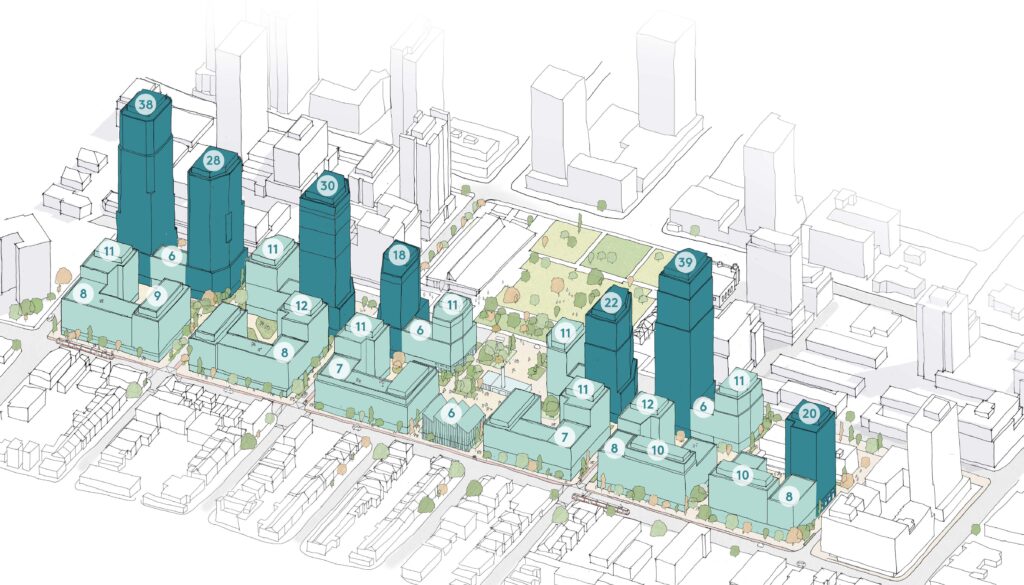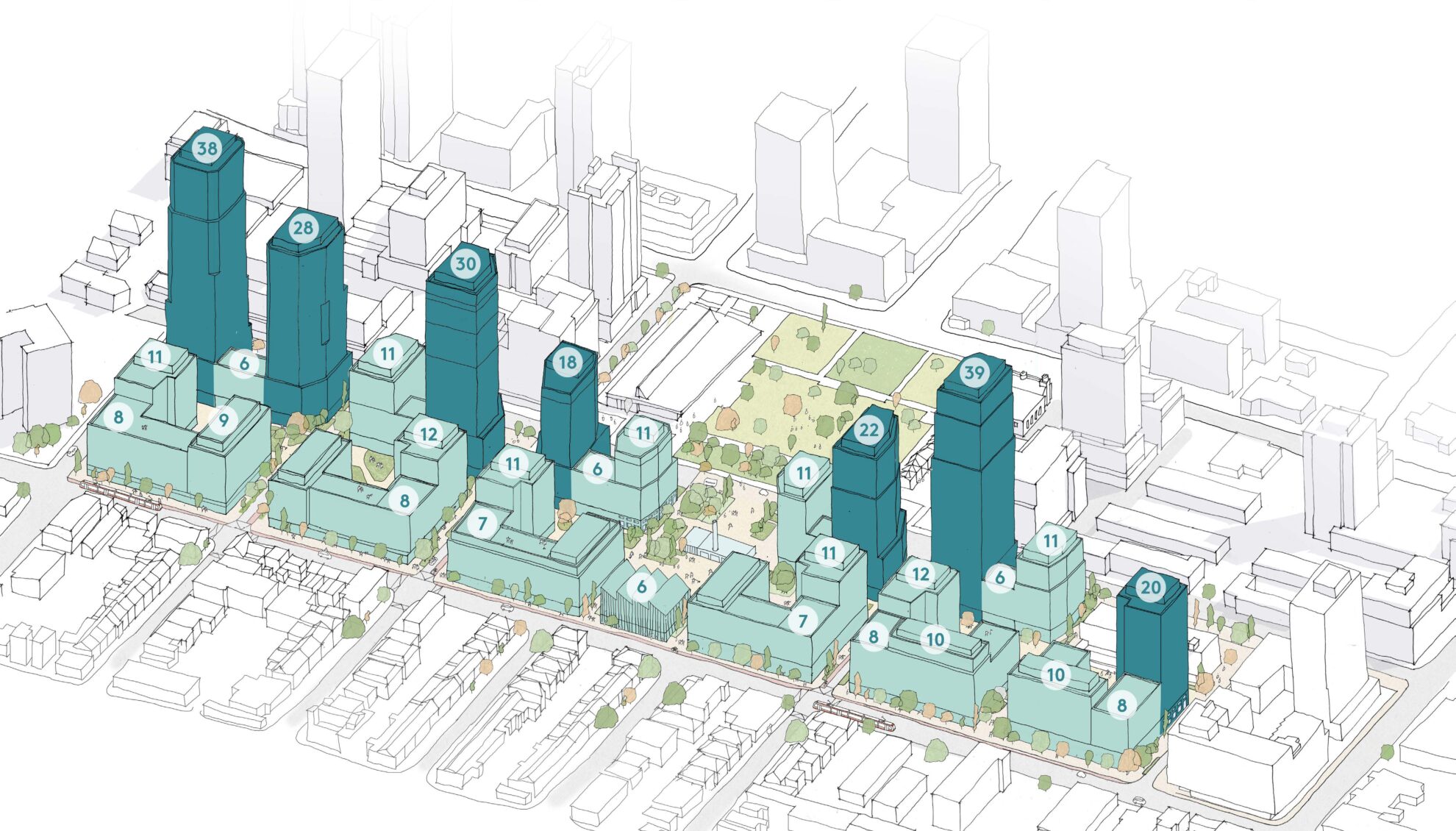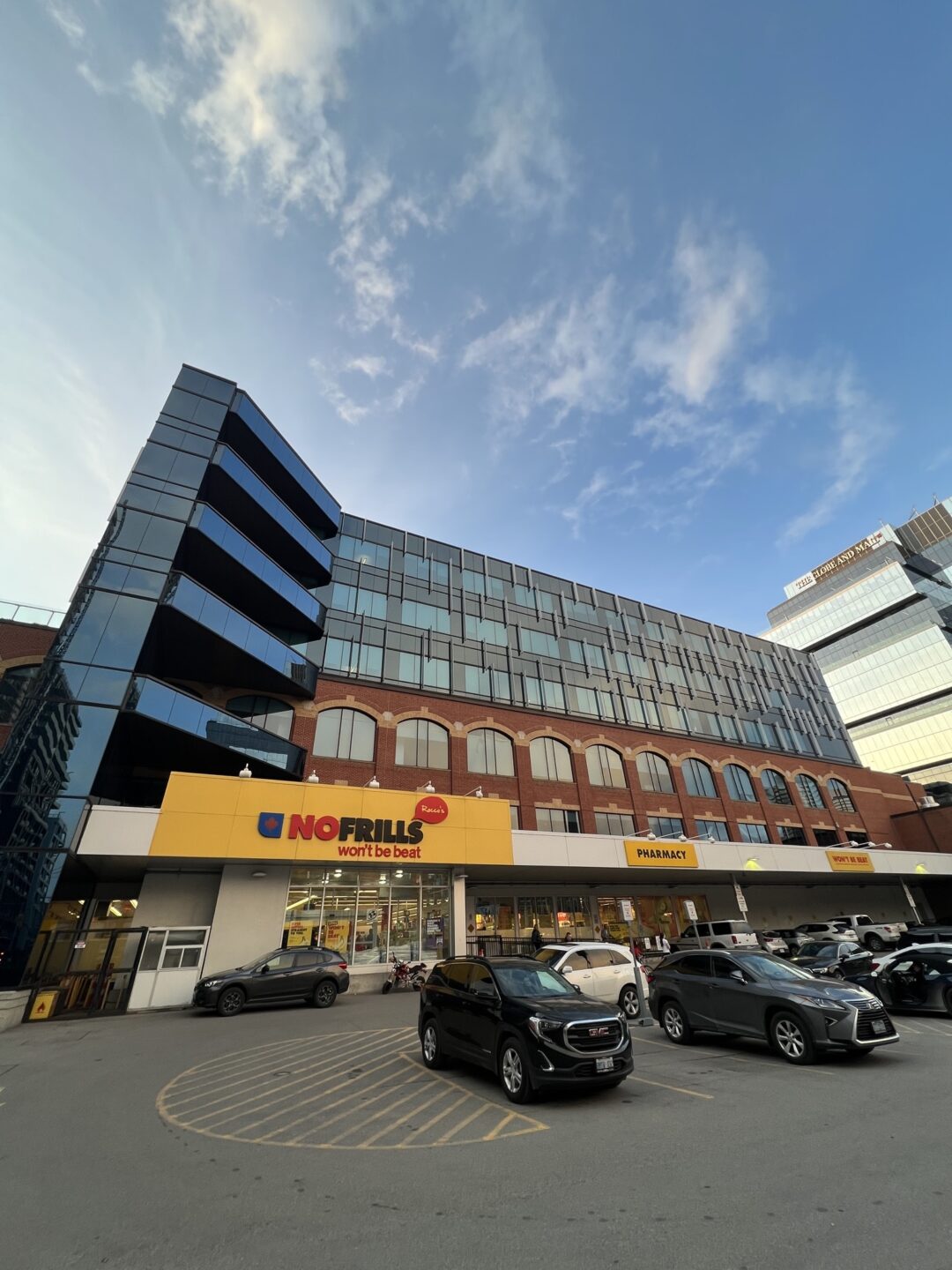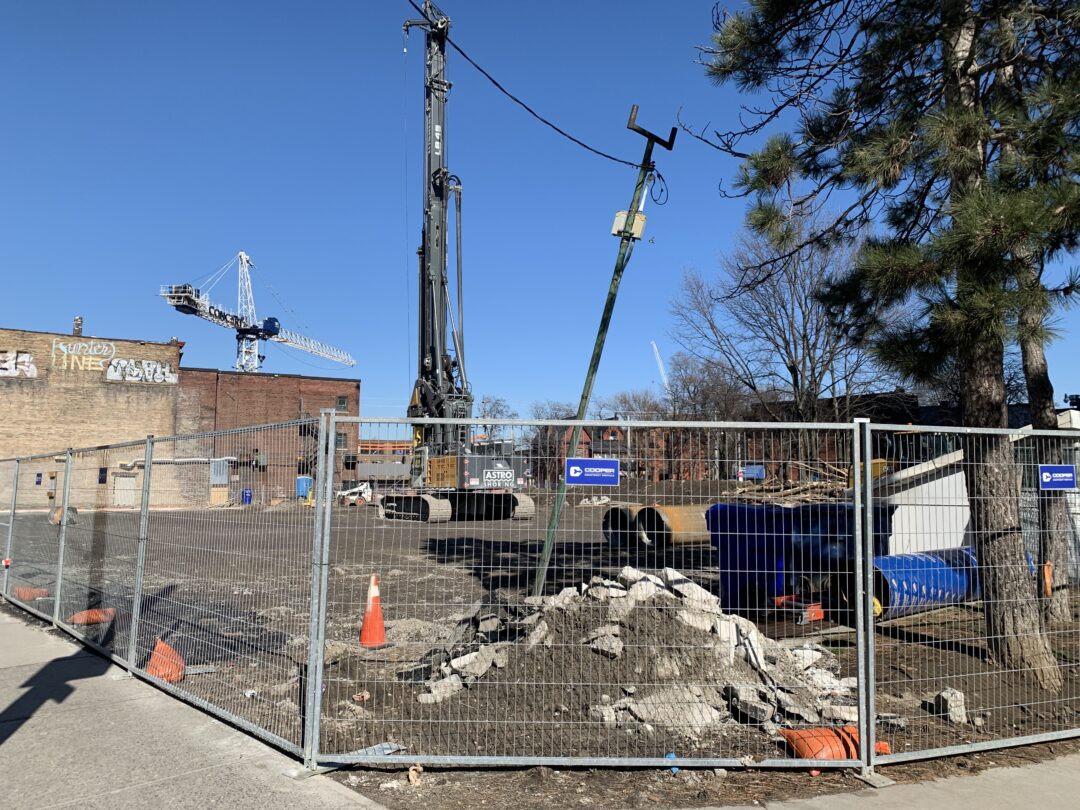By Andre Bermon, Publisher –
In early November, Toronto Community Housing Corporation (TCH) announced demolition plans for buildings in the last development site of Regent Park. Historically termed Regent Park North, the mid-century social housing structures on Gerrard Street between Parliament and River Streets are the last of their kind.
To develop the remaining lands of the Regent Park Revitalization Plan (known as Phases 4 & 5), TCH partnered with private developer Tridel, replacing Daniels Corp. in 2020. Daniels Corp. developed the first three phases of the project, starting in the early 2000s.
The nearly two-decade old revitalization scheme has replaced a portion of the 2,083 rent-geared-to-income (RGI) units in the old Regent Park development. It has also added thousands of market-rent housing units, mostly in the form of high-rise towers, along with new park space and amenities.
However, the project is years behind schedule.
In July, City Council approved a Tridel and TCH rezoning application for Phases 4 & 5, replacing a previous zoning order council granted in 2014. The new zoning dramatically increases height and density allowances.
The revitalization plan includes two community benefit packages: a community benefits agreement (CBA) amounting to $26.8 million and a community benefits charge (CBC), formerly termed a Section 37 charge under the provincial Planning Act. The CBC is calculated by extracting four per cent of the land value.
Here is what is currently planned.

Housing
The Phases 4 & 5 rezoning has earmarked 3,246 units to be constructed across a dozen buildings ranging from six to 39 storeys. (The tallest building constructed in Phases 1-3 is 130 River Street, with 32 storeys.) Taller buildings are to be set back on Oak Street to allow for mid-rise buildings of 6-10 storeys along Gerrard Street. Aside from the proposed relocation of the Parliament Street library, all buildings along Gerrard are to include at-grade commercial space.
Of the 3,246 housing units, 1,976 are slated to be market rate, 633 will replace the remaining RGI units, and 637 units are to be net-new affordable housing.
The city had originally planned to replace all 2,083 RGI units of the old Regent Park. But with governments avoiding spending on social housing, Council and TCH chose financialization of real estate to pay for revitalization.
This meant selling public land to private developers. All of Regent Park’s RGI replacements, including the ones to be built in Phases 4 & 5, were secured through previous Section 37 agreements. What has yet to be subsidized is the 637 net-new affordable housing units, with the majority amassed in the last two buildings of Phase 5.
According to the staff recommendations adopted by Council, funding is to be secured from the provincial and federal governments and other “service providers.” To incentivise the completion of financing requirements, a stopgap measure ties the issuance of the first building permits for buildings containing affordable rental or social housing units to a progress report on achieving affordable housing funds.
If the requirements are not met, TCH must seek direction from Council before proceeding with development on the final block. However, this would not inhibit the developer from constructing market buildings.
Community Benefits
Tridel’s $26.8 million CBA contribution (the largest such commitment in Canada) is being finalized through community consultations with Regent Park stakeholders. It has three spending “buckets”: employment, major investments ($500K+) and “ongoing local granting” of smaller investment subsidies.
According to the TCH/Tridel rezoning website, investment opportunities are numerous and could involve money to fund priorities in Regent Park’s Social Development Plan, which is approaching its last year of funding. Potential investments could include capital projects, micro-supports for entrepreneurs, job training, scholarships and youth programing.
The city’s Social Development and Financing Administration plan has allocated $2.5 million over five years to its associated working group and subcommittees. The goal is to establish a framework on how and where to spend the CBA’s smaller investment subsidies.
In early 2024 the major investment tranche of the $26.8 million will be put to a vote among three different community benefit packages.
As part of the rezoning approval, Ward 13 Councillor Chris Moise directed the community benefits charge (CBC, formerly Section 37) to support 3,714 square metres of community space. Still to be worked out in the final site approval is the design, ownership, and operation of the community space – as well as where it will be placed.
Amenities
Apart from the added community space, the Regent Park’s Phases 4 & 5 is slated to accommodate two main amenities: a new Toronto public library and an outdoor accessible plaza.
The library is to be on the first two floors, with over 2,000 square metres, in a six-storey building earmarked for community space on Gerrard Street between Sackville and Sumach Streets.
The proposed Regent Park library is to replace the aging Parliament Branch at Gerrard and Berkeley. The Toronto Public Library’s 2019 facilities master plan designated the Parliament branch as a priority for major capital work. As the plan recommended relocating the existing branch, TPL’s Board has already approved the funds.
Once the new library is built, the Parliament Branch will be decommissioned, and the property designated excess lands in the city’s real estate portfolio. (Whether the city or TPL will sell the site is not clear.)
The planned central plaza, an outcome of the community benefits charge, is to be built behind the library and back onto Oak Street. It will be centred around the Boiler House, a remnant of the old Regent Park development to be refurbished as a community and cultural space.
Unlike in previous phases of the revitalization plan, the Tridel development will not offer any publicly owned/operated outdoor green space. All outdoor amenity space is designated privately owned public space (POPs), including the central plaza, and will be maintained by the developer.
For more information on the planned development, visit www.rp4and5.ca





1 Comment
I was wondering where the parking is located. There is already limited parking in the area.